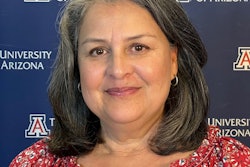Hispanic advocacy groups want President Barack Obama to increase Hispanic representation in government jobs, especially in education.
The federal government bills itself as a leader in employing minorities, with American Indians, Asians and Blacks all holding a larger share of federal jobs than in the civilian labor force.
The exception: Hispanics, with 7.8 percent of federal jobs in 2007, despite holding 13.3 percent of nonfederal jobs. Hispanics are even scarcer in the Department of Education, with just 4 percent of the jobs. Hispanic groups want President Barack Obama to change that.
Even before Obama took office, the National Hispanic Leadership Agenda (NHLA), an umbrella group of advocacy organizations, gave the transition team a scathing report on Hispanic underrepresentation in the federal work force. It noted that two departments with the most critical shortages of Hispanic employees — education and health and human services — also oversee areas most critical to the community. Hispanics have the highest high school dropout and lowest college enrollment rates of any ethnic group and many are among the nation’s uninsured.
The Hispanic Association of Colleges and Universities (HACU) raised the issue in a Dec. 30 conference call with the transition team, noting there are no Hispanics in the Department of Education upper management ranks known as the Senior Executive Service, according to the U.S. Office of Personnel Management (OPM).
“Education is the cornerstone of social mobility in the nation, and the Department of Education is the lead agency nationwide to promote educational opportunity,” HACU President Antonio Flores says. “We begin to wonder: why is our federal government excluding us from an agency that is so vital to the success of our community?”
Studies of the underrepresentation show Hispanics face extra barriers.
A General Accountability Office (GAO) report in 2006 said citizenship status and educational levels had the heaviest impact on Hispanic numbers. The U.S. government has a larger share of jobs requiring higher degrees than the nonfederal work force. Citing 2000 Census figures, it said 29 percent of federal jobs required professional degrees compared to 18 percent in the civilian labor force. When the report looked at Census data of adult U.S. citizens, it found Hispanics and American Indians had the lowest percentage of college degrees compared to any other ethnic group (15.4 percent).
The GAO report said 99.7 percent of executive branch employees are U.S. citizens, putting Hispanics at a disadvantage with the lowest rate of citizenship of any ethnic group, except for Asians, who had similar rates. The 2000 Census showed 65 percent of Hispanics were U.S. citizens.
The GAO report set off a firestorm among some groups that say it offered excuses to the federal government to not hire Hispanics. “The Hispanics with the skills are out there.
The Hispanics with a desire to serve their country with the federal government are out there,” says Manuel Oliverez, chairman and CEO of National Image Inc., a group created in 1972 to aid Hispanics in federal government.
“But you really have to have an upfront policy to make things happen. There has to be a will,” says Oliverez. The NHLA report critiqued the OPM for its “failure to develop and implement effective hiring and employee retention programs [and] provide guidance and assistance to federal agencies accountable for work force diversity initiatives to improve Hispanic representation.”
OPM spokesman Mike Orenstein wouldn’t comment on the report, other than to say that Hispanics’ share of federal jobs has improved.
“What I can tell you is that a priority of the Bush administration and previous administrations has been to have a federal work force that mirrors or represents the population of the United States,” Orenstein says. “We have held work fairs on HACU campuses. We are making efforts to attract and recruit qualified Hispanic individuals.”
He cites recruiting ads that have aired on Spanish-language TV stations.
Despite repeated requests for comment, the Department of Education’s only response was to supply its most recent report to the president on Hispanic employment. Among the efforts it cites is attending various career fairs.
On the campaign trail, Obama said the federal government needs a plan to boost Hispanic numbers at all levels of government — not just in political appointments.
“As president, I will make those changes,” Obama wrote to HACU.
Will it be in the form of an executive order, such as the one President Bill Clinton signed three months before leaving office in 2000? That order, created to eliminate the underrepresentation of Hispanics in the federal work force, required the head of every agency and executive department to create a program to recruit Hispanics and push for their career development once they were hired. It also required OPM to take the lead in promoting that diversity.
“I can’t get into that,” Obama transition spokesman Federico de Jesús tells Diverse, but notes that Obama’s cabinet appointments and his White House inner circle have been the most diverse in history. “That’s sort of a preview of what’s to come in other subcabinet- level posts. We’re starting with the cabinet level, but we are committed at having that trickle down.”
Email the editor: [email protected]
Click here to post and read comments
© Copyright 2005 by DiverseEducation.com















